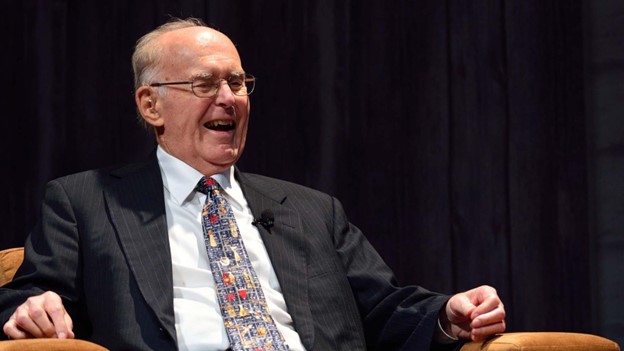Intel co-founder and technical visionary Gordon Moore dies at the age of 94. He was the person behind what we now refer to as Moore’s Law, a guiding principle in the semiconductor industry and others.
We all throw around the term “Moore’s Law,” which states the number of transistors in an integrated circuit doubles approximately every two years. That principle was based on a prediction, or theory, by Gordon Moore, co-founder of Intel.
Moore, who ignited technological progression with that observation six decades ago, passed away last week at the age of 94.
When Moore, along with former colleague Robert Noyce, founded Intel in 1968, with backing from a venture capitalist, a few years had already passed after Moore had made the astute observation that would forever be attributed to him.

Moore began his career after earning a PhD in physics and chemistry. Shortly after, he began working with microchips in the mid-1950s with Nobel Prize winner William Shockley, renowned for having invented the transistor. Not long after, Moore and seven colleagues from Shockley Semiconductor Laboratory left there, a move that earned them the moniker the “traitorous eight.” They then created Fairchild Semiconductor, manufacturing the integrated circuit—one of the first to do so on a commercially viable basis.
While many large companies from the 1960s no longer exist, Intel has grown by leaps and bounds, and today remains prominently positioned in the semiconductor realm as the world’s largest logic chipmaker. A decade after establishing Fairchild, Moore and Noyce, two of the “eight,” founded Intel—a name based on two words: “integrated” and “electronics.” They, along with Andrew Grove, who would be Intel’s third employee and eventually its third CEO, then built Intel into the company it is today—a multinational corporation. Headquartered in Santa Clara, California, the company has approximately 130,000 and has a market cap of $125 billion.
Moore was initially executive vice president through 1975, when he became president. He then served as chairman of the board and CEO from 1975 to 1987, giving up the CEO title but continuing as chairman until 1997. After that, he served as chairman emeritus for nine years.
Pat Gelsinger, current Intel CEO, said in a statement, “Gordon Moore defined the technology industry through his insight and vision. He was instrumental in revealing the power of transistors, and inspired technologists and entrepreneurs across the decades. We at Intel remain inspired by Moore’s Law and intend to pursue it until the periodic table is exhausted. Gordon’s vision lives on as our true north as we use the power of technology to improve the lives of every person on Earth. My career and much of my life took shape within the possibilities fueled by Gordon’s leadership at the helm of Intel, and I am humbled by the honor and responsibility to carry his legacy forward.”
Without question, Gordon was a true visionary. In recognition of his innovations and technical achievements, he was given the National Medal of Technology in 1990 and the Presidential Medal of Freedom in 2002.
In addition to his technical prowess, Moore was a philanthropist, establishing the Gordon and Betty Moore Foundation with his wife in 2000. According to Intel, the foundation has donated more than $5.1 billion to charitable causes.
A lot has changed since Moore’s early observation. In fact, Moore himself even changed the timeframe on his famous prediction, which he initially had doubly every year, to doubly every two years. Eventually, it was reduced again from 24 months to 18 months (and is nearing its limits). Nevertheless, it is still an important measurement that guides and drives the semiconductor industry all these years later. Moore’s achievements and vision have provided a technological landscape that forms our existence today.